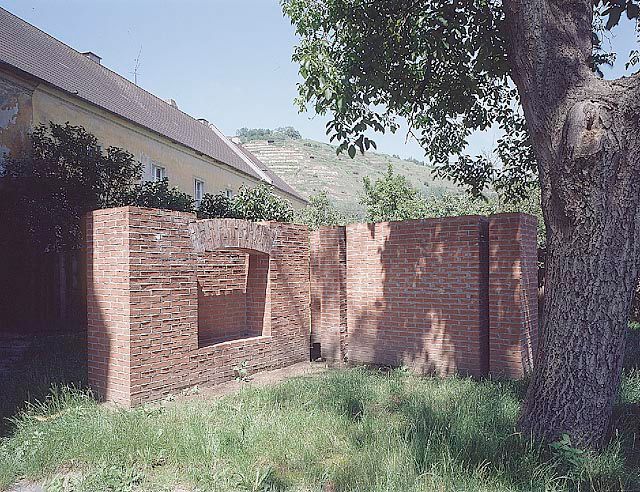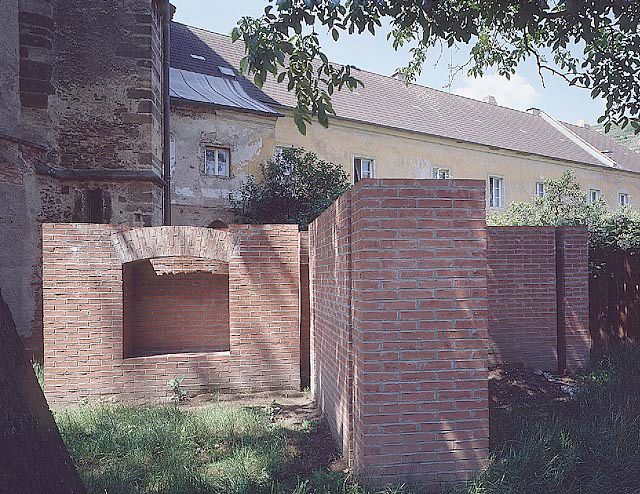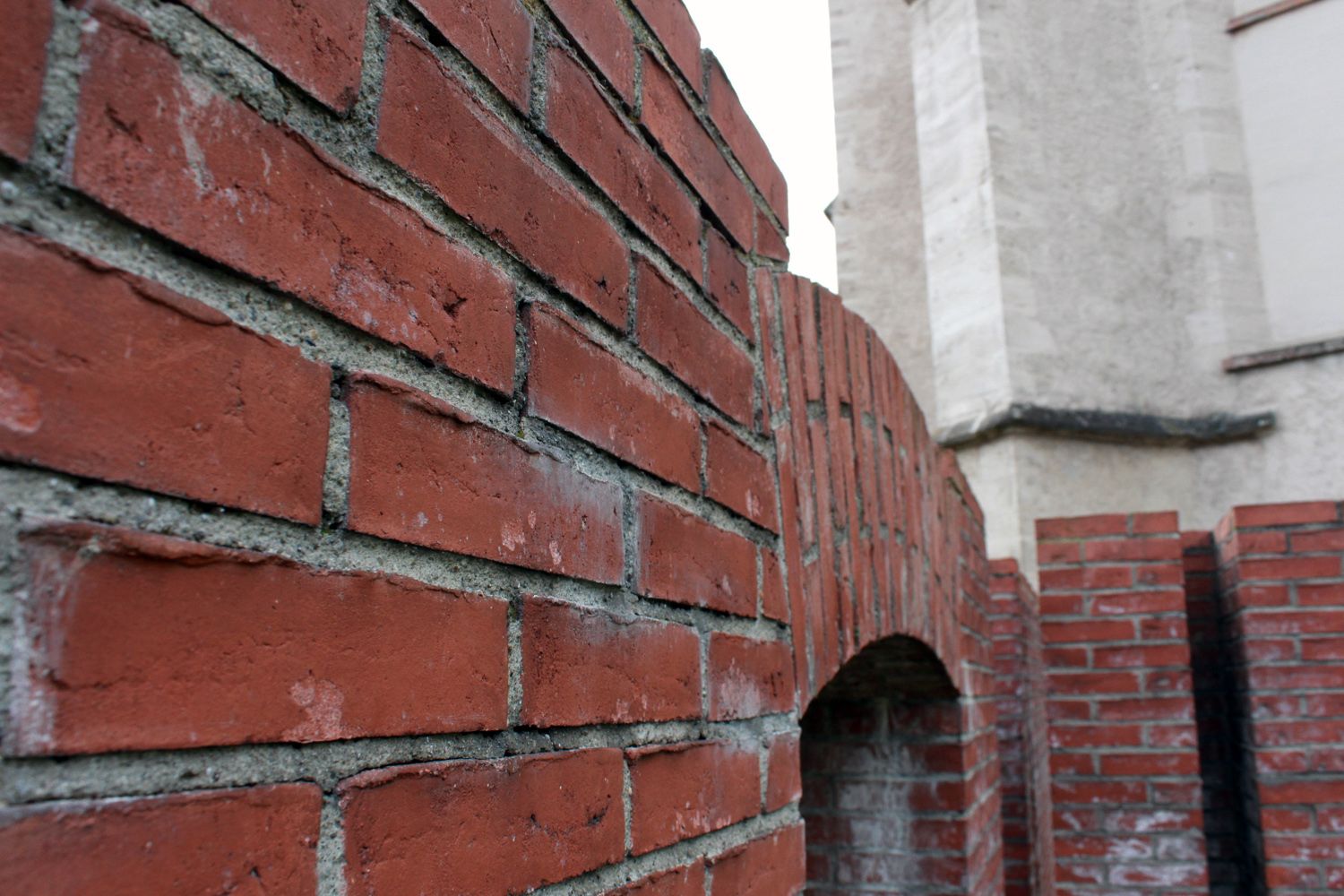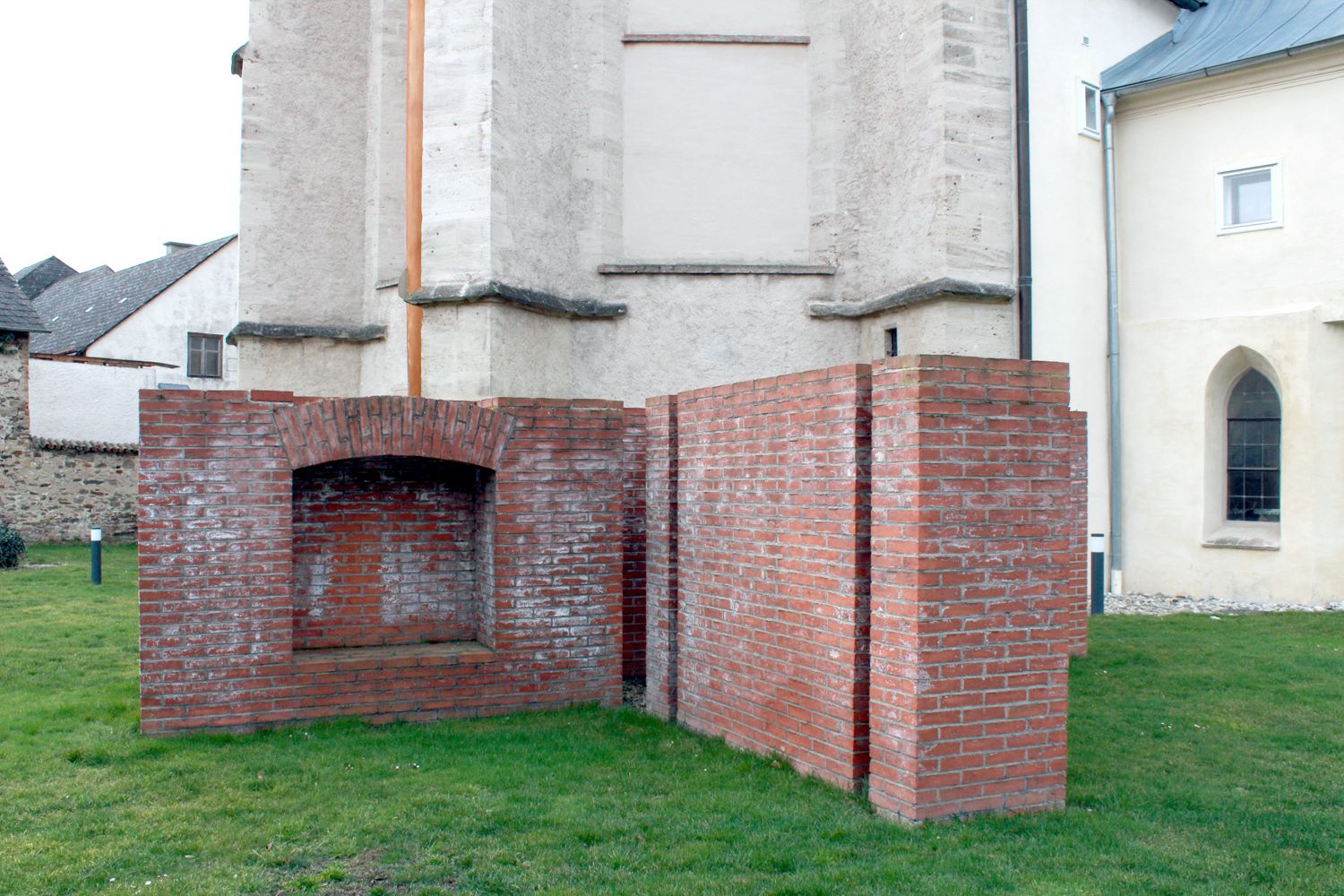Per Kirkeby
:
Church of the Minorites in Krems-Stein
Back
Information
Per Kirkeby built a brick unit in the garden of the now secularised medieval church. With its suggestion of bricked-up windows, the module tells a story alongside that of the church, addressing those stories which are inherent in things.
I walked around the church to look for a possible place for the bricks. It was narrow and overgrown and neglected. It was monastery church and town church in one, and it was only just possible to force one's way through along one of the long sides, on the other side it had grown together with the other buildings. Yet right at the back, at the long struts at the end of the chancel, there was town and country. Country because the vineyards towered up at tangible intervals. Town because, in the other direction, there was a view of the rooftops and church towers; it was a town like an engraving by Dürer. Or the secret exuberance of a back garden. There was a twittering and humming. So there I stood, in Krems, secluded behind a medieval church, standing as it were quite by chance, as if briefly hesitating in an eternal restlessness, and was reminded of the first paragraph of Wittgenstein: 'The world is everything which is the case'. And while I made notes in my Chinese notebook and took measurements by pacing among the weeds, I was reminded of the second: 'What is the case is the existence of facts'. And while I strode around evoking among the weeds, the graves began to rise up. Like mushrooms at the roots of the tall and sturdy chancel. The light fluttered in the leaves, the vineyards hummed in all their stillness, the town disintegrated. And, accompanied by my favourite paragraphs in Wittgenstein, in the logical evaluation of something further below, namely 2.15, the elements began to arrange themselves under the influence of unknown vibrations: the fact that the elements of the picture behave towards one another in a certain way depended upon the fact that things behave in that way to one another. At Vienna airport everything more or less fell into place along the blue lines of the notebook. A not wholly unknown configuration had been reborn, had sprouted from the earlier burials behind the church. The great cycle or eternal and obligatory repetition. Here at my desk it was put to the test on the brick module. That is a most decisive test. First of all, the bricks have to be found (in this case, outside of Austria, where for some reason there are only clinker bricks, whose dimensions are too massive to be squeezed in behind the church). If all the movements could be carried out while keeping to the measurements of the wall, then everything was fine and they would be able to begin with the walls. Everything fitted and the masonry work was executed in an excellent manner. When I returned, the sun was streaming down into the blind windows of the large stones and only got round the central axis with difficulty. Later, when the mayor and the other guests came, it was raining cats and dogs, but not even that was so bad.
(Per Kirkeby)





